
|
#1091
|
||||
|
||||
|
John Ashton, ‘Beverly Hills Cop’ franchise’s grumpy Detective Taggart, dies at 76
By Alexandra Del RosarioStaff Writer Sept. 30, 2024 11:20 AM PT 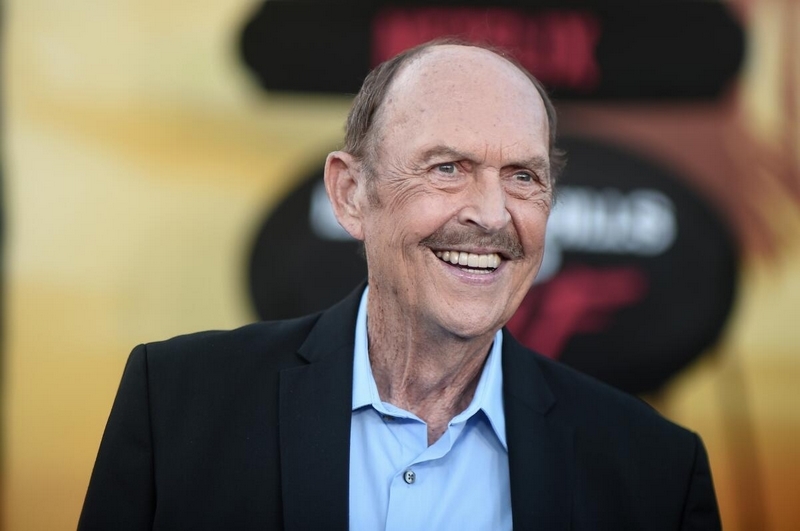 Richard Shotwell / Invision / AP John Ashton, the veteran actor who was best known for portraying crabby Detective John Taggart in the “Beverly Hills Cop” franchise, has died. Ashton died Thursday in Fort Collins, Colo., his family said in a statement to The Times, shared by his manager, Alan Somers. A cause of death was not revealed. He was 76. “John was a loving husband, brother, father, and grandfather who will be deeply missed by all who knew him,” the family said. Ashton, a Massachusetts native, died two months after the premiere of Netflix’s “Beverly Hills Cop: Axel F,” which saw him reunite with Eddie Murphy and Judge Reinhold 40 years after the original movie premiered in 1984. The first “Beverly Hills Cop,” directed by Martin Brest, follows Murphy’s Axel Foley, a Detroit detective who works to solve a murder case in Beverly Hills with the reluctant help of Ashton’s Taggart and Judge Reinhold’s Billy Rosewood. Taggart is a seasoned, by-the-book detective whose relationship with Axel starts off contentiously. “We’re more likely to believe an important local businessman than a foul-mouthed jerk from out of town,” Taggart tells his soon-to-be partner in “Beverly Hills Cop.” Tensions between Taggart and Axel eventually cool, leading to a successful rescue mission at the end of the film and paving the way for more “Beverly Hills Cop” films in the years to follow. Three years after the first installment, Murphy, Ashton and Reinhold reunited for “Beverly Hills Cop II,” though Ashton did not return for “Beverly Hills Cop III” in 1994. In July 2024, Netflix revived the film franchise and reunited the trio for “Beverly Hills Cop: Axel F.” “It was like a homecoming, like a family reunion when we got back together. It was very easy,” Ashton told HeyUGuys during the film’s premiere. Before “Beverly Hills Cop,” Ashton was no stranger to popular police-centered projects, having appeared in series including “Kojak,” “Columbo” “and “Starsky & Hutch” in the ’70s. His TV credits also include “M*A*S*H,” “Dallas,” “Law & Order: SVU,” “Brookside” and “Hardball.” Ashton also starred in films “An Eye for an Eye,” “Midnight Run,” “Little Big League” and “Some Kind of Wonderful,” among others. John David Ashton was born Feb. 22, 1948, in Springfield, Mass. He graduated from USC, where he studied theater arts. More than a memorable actor, Ashton was also an avid reader, golf enthusiast, fan of the New York Yankees and New York Giants, and a family man. “Family was paramount to John,” his loved ones said. He is survived by his wife, Robin Hoye, children Michelle and Michael; stepchildren Courtney, Lindsay and Ashley; grandson Henry; sisters Sharon Ann Ashton and Linda Jean and brother Edward. A celebration of life will be held at a later date, though the family says donations in Ashton’s memory can be made to Pathways Hospice Care in Fort Collins. Code:
Content, Pictures and Download links visible to registered users only. REGISTER NOW to access all areas that are invisible to non-members. 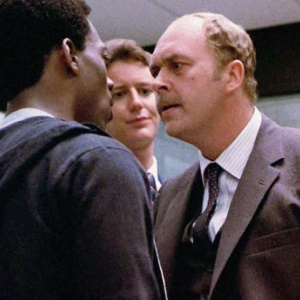 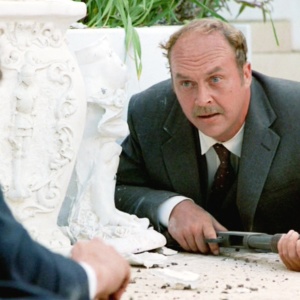 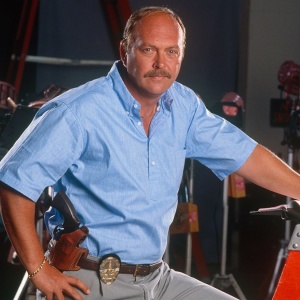 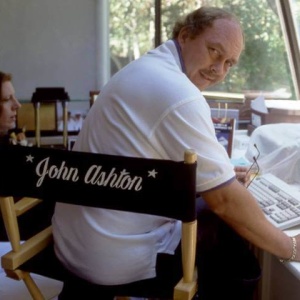 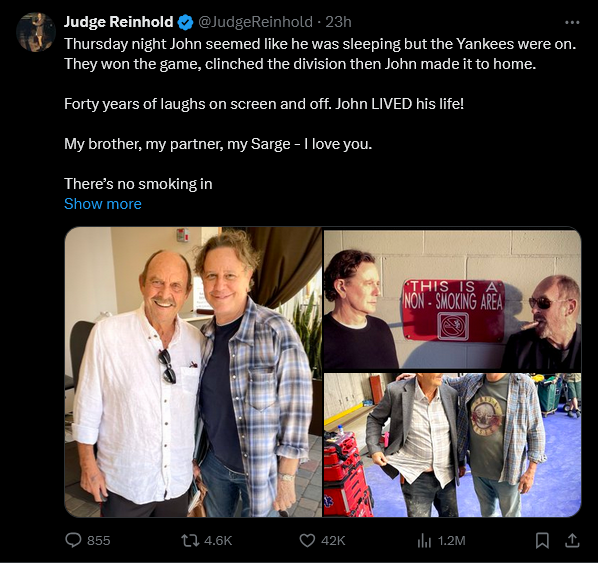
__________________
"I was going down on a chick who was 7 months pregnant when unexpectedly her unborn baby's tiny hand reached out and grabbed my face!" 
|
|
#1092
|
||||
|
||||
|
Hall of Fame center Dikembe Mutombo dies of brain cancer at 58
Steve Gardner Published 11:37 a.m. ET Sept. 30, 2024 Updated 4:28 p.m. ET Sept. 30, 2024 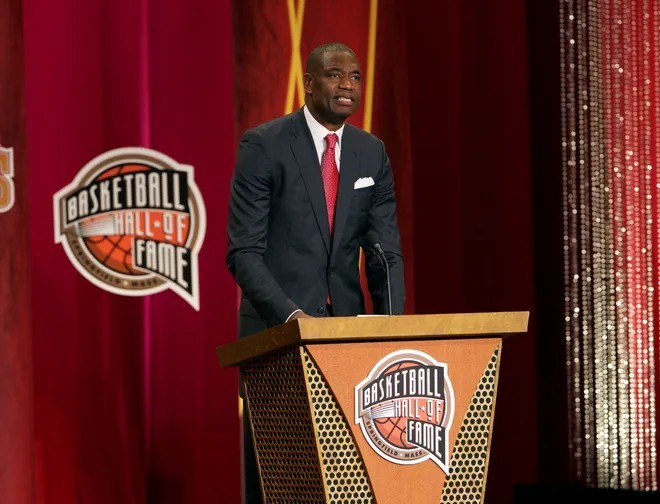 David Butler II, USA TODAY Sports Basketball Hall of Famer Dikembe Mutombo, who played 18 seasons in the NBA and served as a global ambassador for the league after retiring, has died from brain cancer, the NBA announced Monday. Mutombo was 58. "Dikembe Mutombo was simply larger than life," NBA Commissioner Adam Silver said in a statement announcing his death. "On the court, he was one of the greatest shot blockers and defensive players in the history of the NBA. Off the floor, he poured his heart and soul into helping others." The 7-2 center was the fourth overall pick in the 1991 NBA draft by the Denver Nuggets. He quickly established himself as a force in the paint, averaging 16.6 points and 12.3 rebounds per game on his way to finishing second in the 1992 rookie of the year voting. Mutombo played for six different teams during his pro career, earning eight All-Star selections and being named to three all-NBA teams. However, he was best known as a shot-blocker – leading the league in that category in three consecutive seasons from 1994 to 1996 and being named the NBA's defensive player of the year four times. A native of the Democratic Republic of the Congo, Mutombo came to the United States to play college basketball for Georgetown University and legendary coach John Thompson. He played his first five seasons with the Nuggets before signing with the Atlanta Hawks as a free agent in 1996. He went on to play with the Philadelphia 76ers, New Jersey Nets and New York Knicks before finishing his career with the Houston Rockets. In a statement, Hawks principal owner Tony Ressler said: “We are deeply saddened by the news of Dikembe Mutombo’s passing. “Dikembe was a proud and honorable man, who lived up to the definition of a word that became synonymous with his name – humanitarian. He used his many gifts and his platform to improve the lives of everyone he encountered, especially in his homeland of the Democratic Republic of the Congo and throughout Africa. “His passion for the game, its growth and the joy he brought to defense – including his undeniable presence and iconic ‘finger wag’ – made him a star on the court and with the fans around the globe. “I was fortunate to have been able to call him a friend. My family and I were beyond proud to have him represent the Hawks organization on and off the court. With his jersey in the rafters, his life and legacy will always be remembered in Atlanta. “On behalf of the entire Hawks organization, our thoughts, prayers and support are with Rose and their family at this difficult time.” Mutombo retired at the end of the 2008-09 season, finishing his career with 11,729 points (9.8 per game) and 12,359 rebounds (10.3 per game). He was inducted into the Naismith Memorial Basketball Hall of Fame in 2015. After his playing career ended, Mutombo was named by the NBA to be its first Global Ambassador. In that role, he worked extensively to grow the game internationally, especially in African nations. "He was a humanitarian at his core," Silver said. "He loved what the game of basketball could do to make a positive impact on communities, especially in his native Democratic Republic of the Congo and across the continent of Africa." In addition to his compassionate side, Mutombo also had a distinctive sense of humor – both on and off the court. His signature finger wag was incorporated into an iconic commercial for GEICO insurance in which he used his shot-blocking talents in everyday life. In 2022, Mutombo revealed that he was undergoing treatment in Atlanta for a brain tumor. (This story was updated to include additional information.) Code:
Content, Pictures and Download links visible to registered users only. REGISTER NOW to access all areas that are invisible to non-members. 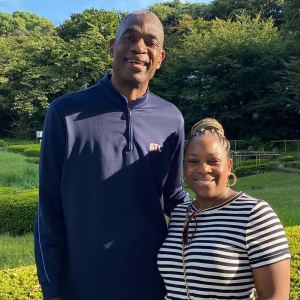 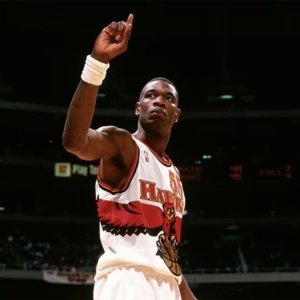 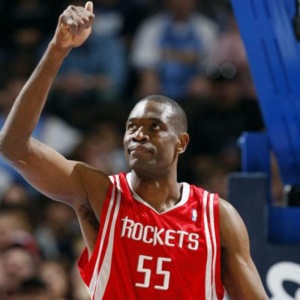 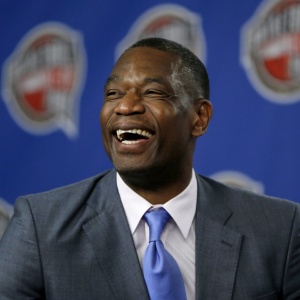 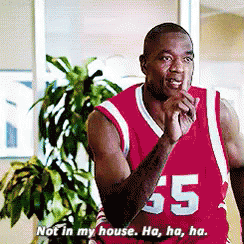
__________________
"I was going down on a chick who was 7 months pregnant when unexpectedly her unborn baby's tiny hand reached out and grabbed my face!" 
|
|
#1093
|
||||
|
||||
|
Pete Rose, baseball’s banned hits leader, has died at age 83
By HILLEL ITALIE Updated 6:21 PM PDT, September 30, 2024 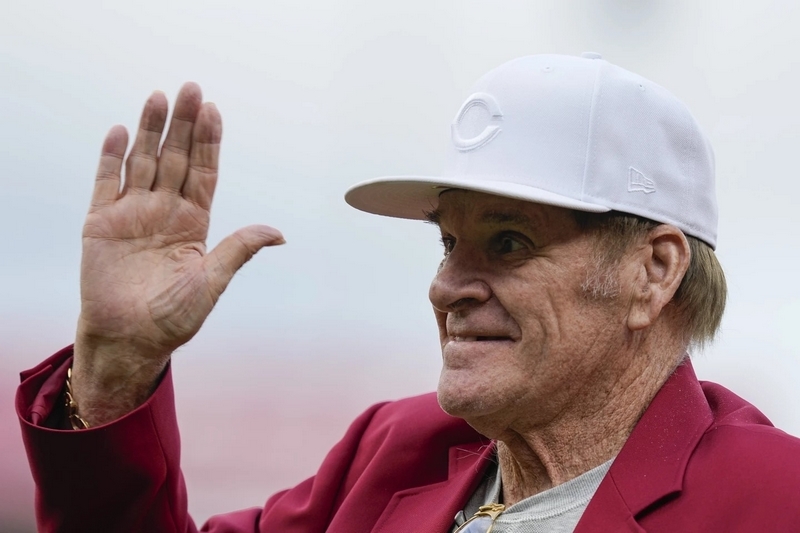 AP Photo/Darron Cummings NEW YORK (AP) — Pete Rose, baseball’s career hits leader and fallen idol who undermined his historic achievements and Hall of Fame dreams by gambling on the game he loved and once embodied, has died. He was 83. Stephanie Wheatley, a spokesperson for Clark County in Nevada, confirmed on behalf of the medical examiner that Rose died Monday. Wheatley said his cause and manner of death had not yet been determined. For fans who came of age in the 1960s and ‘70s, no player was more exciting than the Cincinnati Reds’ No. 14, “Charlie Hustle,” the brash superstar with the shaggy hair, puggish nose and muscular forearms. At the dawn of artificial surfaces, divisional play and free agency, Rose was old school, a conscious, dirt-stained throwback to baseball’s early days. Millions could never forget him crouched and scowling at the plate, running full speed to first even after drawing a walk, or sprinting for the next base and diving headfirst into the bag. Major League Baseball, which banished him in 1989, issued a brief statement expressing condolences and noting his “greatness, grit and determination on the field of play.” Reds principal owner and managing partner Bob Castellini said in a statement that Rose was “one of the fiercest competitors the game has ever seen” and added: “We must never forget what he accomplished.” A 17-time All-Star, the switch-hitting Rose played on three World Series winners. He was the National League MVP in 1973 and World Series MVP two years later. He holds the major league record for games played (3,562) and plate appearances (15,890) and the NL record for the longest hitting streak (44). He was the leadoff man for one of baseball’s most formidable lineups with the Reds’ championship teams of 1975 and 1976, with teammates that included Hall of Famers Johnny Bench, Tony Perez and Joe Morgan. But no milestone approached his 4,256 hits, breaking his hero Ty Cobb’s 4,191 and signifying his excellence no matter the notoriety which followed. It was a total so extraordinary that you could average 200 hits for 20 years and still come up short. Rose’s secret was consistency, and longevity. Over 24 seasons, all but six played entirely with the Reds, Rose had 200 hits or more 10 times, and more than 180 four other times. He batted .303 overall, even while switching from second base to outfield to third to first, and he led the league in hits seven times. “Every summer, three things are going to happen,” Rose liked to say, “the grass is going to get green, the weather is going to get hot, and Pete Rose is going to get 200 hits and bat .300.” Rose was Rookie of the Year in 1963, but he started off 0 for 12 with three walks and a hit by pitch before getting his first major league hit, an eighth-inning triple off Pittsburgh’s Bob Friend. It came in Cincinnati on April 13, 1963, the day before Rose’s 22nd birthday. He reached 1,000 in 1968, 2,000 just five years later and 3,000 just five years after that. He moved into second place, ahead of Hank Aaron, with hit No. 3,772, in 1982. No. 4,000 was off the Phillies’ Jerry Koosman in 1984, exactly 21 years to the day after his first hit. He caught up with Cobb on Sept. 8, 1985, and surpassed him three days later, in Cincinnati, with Rose’s mother and teenage son, Pete Jr., among those in attendance. Rose was 44 and the team’s player-manager. Batting left-handed against the San Diego Padres’ Eric Show in the first inning, he smacked a 2-1 slider into left field, a clean single. The crowd of 47,000-plus stood and yelled. The game was halted to celebrate. Rose was given the ball and the first base bag, then wept openly on the shoulder of first base coach and former teammate, Tommy Helms. He told Pete Jr., who would later play briefly for the Reds: “I love you, and I hope you pass me.” He thought of his late father, a star athlete himself who had pushed him to play sports since childhood. And he thought of Cobb, the dead-ball era slasher whom Rose so emulated that he named another son Tyler. Baseball Commissioner Peter Ueberroth, watching from New York, declared that Rose had “reserved a prominent spot in Cooperstown.” After the game, a 2-0 win for the Reds in which Rose scored both runs, he received a phone call from President Ronald Reagan. “Your reputation and legacy are secure,” Reagan told him. “It will be a long time before anyone is standing in the spot where you’re standing now.” Four years later, he was gone. On March 20, 1989, Ueberroth (who would soon be succeeded by A. Bartlett Giamatti) announced that his office was conducting a “full inquiry into serious allegations” about Rose. Reports emerged that he had been relying on a network of bookies and friends and others in the gambling world to place bets on baseball games, including some with the Reds. Rose denied any wrongdoing, but the investigation found that the “accumulated testimony of witnesses, together with the documentary evidence and telephone records reveal extensive betting activity by Pete Rose in connection with professional baseball and, in particular, Cincinnati Reds games, during the 1985, 1986, and 1987 baseball seasons.” Betting on baseball had been a primal sin since 1920, when several members of the Chicago White Sox were expelled for throwing the 1919 World Series — to the Cincinnati Reds. Baseball’s Rule 21, posted in every professional clubhouse, proclaims that “Any player, umpire or club or league official or employee who shall bet any sum whatsoever upon any baseball game in connection with which the bettor has a duty to perform shall be declared permanently ineligible.’' In the decades following the 1919 Series, Dodgers manager Leo Durocher and Detroit Tigers pitcher Denny McLain were among those suspended for gambling, and Willie Mays and Mickey Mantle were reprimanded for associating with casinos, even though both had retired years earlier. As far back as the 1970s, Bench and others had worried about Rose. By all accounts, he never bet against his own team, but even betting on the Reds left himself open to blackmail and raised questions about whether a given managerial decision was based on his own financial interest. In August 1989, at a New York press conference, Giamatti spoke some of the saddest words in baseball history: “One of the game’s greatest players has engaged in a variety of acts which have stained the game, and he must now live with the consequences of those acts.” Giamatti announced that Rose had agreed to a lifetime ban from baseball, a decision that in 1991 the Hall of Fame would rule left him ineligible for induction. Rose attempted to downplay the news, insisting that he had never bet on baseball and that he would eventually be reinstated. Within weeks of his announcement, Giamatti was dead from a heart attack. But the ban remained in place and Rose never made it to the Hall in his lifetime, although he did receive 41 votes in 1992 (when 323 votes were needed), around the time the Hall formally ruled that those banned from the game could never be elected. His status was long debated. Rose’s supporters including Donald Trump, who in 2015, the year before he was elected president, tweeted: “Can’t believe Major League Baseball just rejected @PeteRose_14 for the Hall of Fame. He’s paid the price. So ridiculous — let him in!” Meanwhile, his story changed. In a November 1989 memoir, written with “The Boys of Summer” author Roger Kahn, Rose again claimed innocence, only to reverse himself in 2004. He desperately wanted to come back, and effectively destroyed his chances. He would continue to spend time at casinos, insisting he was there for promotion, not gambling. He believed he had “messed up” and that his father would have been ashamed, but he still bet on baseball, albeit legally. “I don’t think betting is morally wrong. I don’t even think betting on baseball is morally wrong,” he wrote in “Play Hungry,” a memoir released in 2019. “There are legal ways, and there are illegal ways, and betting on baseball the way I did was against the rules of baseball.” His disgrace was all the harder because no one seemed to live for baseball more than Rose did. He remembered details of games from long ago and could quote the most obscure statistics about players from other teams. He was as relentless in spring training as he was in the postseason, when he brawled with the New York Mets’ Buddy Harrelson during the 1973 NL playoffs. His compulsion was most memorably defined in an otherwise meaningless contest — the 1970 All-Star Game, in Cincinnati. In the bottom of the 12th inning, the score tied at 4, he singled with two outs and advanced to second on a single by Billy Grabarkewitz. When Jim Hickman followed with a single, Rose raced past third and crashed at home into the Cleveland Indians’ Ray Fosse, scoring the winning run and fracturing Fosse’s shoulder. It was a collision often replayed, and an injury from which the catcher would say years later still pained him. “Would I do the same thing again today in the same situation? Damn right I would,” Rose wrote in his 2019 memoir. “But would I rather it had all gone down without Ray having suffered an injury that would dog his career? You bet.”
__________________
"I was going down on a chick who was 7 months pregnant when unexpectedly her unborn baby's tiny hand reached out and grabbed my face!" 
|
|
#1094
|
||||
|
||||
|
Rose didn’t drink or smoke but indulged himself in other ways. He cared openly about money, vowing to become the first singles hitter to make $100,000 a year and leaving the Reds for the Phillies after declaring free agency at the end of the 1978 season (Rose returned in 1984). He was a longtime womanizer whose two marriages ended in divorce and who acknowledged fathering a child out of wedlock. In 1990, he pleaded guilty to two charges of filing false income tax returns and served five months in prison, the prosecutor calling his sentencing ″a sad day for those young Americans to whom Pete Rose was an idol.″
In the beginning, it was all about the game. He was a Cincinnati native from a working-class neighborhood whose father, Harry Francis Rose, like the father of Mickey Mantle, taught his son to be a switch hitter. Rose mastered his skills with a broom handle and a rubber ball, thrown to him by his younger brother, Dave. “I’d let him get as close as he wanted,’' Pete Rose told The Cincinnati Enquirer in 2015. “The closer he got, the harder it was to hit. Hour after hour, he’d try to strike me out. I wore that wall out.’' The Roses attended numerous games at Cincinnati’s Crosley Field, where the elder Rose noticed that St. Louis outfielder Enos Slaughter would always run full speed, whether at bat or in the field, and tell his son to do the same. Pete Rose graduated from high school in June 1960. He flew to Rochester, New York, two days later, and then rode a bus some 45 miles to Geneva, home of the Reds’ level D minor league team. By 1962, he had been promoted to level A, in Macon, Georgia. He batted .330 and vowed to displace Reds second baseman Don Blasingame in 1963, telling a reporter “I’m going to be on his heels.” Blasingame was with the Washington Senators by midseason and Rose was a phenomenon: “Charlie Hustle,” Yankees pitcher Whitey Ford reportedly called him, mockingly, after watching him hurry to first upon drawing a walk in spring training. Rose hit .273 as a rookie and, starting in 1965, batted .300 or higher 14 out of 15 seasons. He was so dependable that in 1968, the “Year of the Pitcher,” he led the league with a .335 average, one of three batting titles. “You could see he was going to be something, even in the minor leagues,” Dave Bristol, who managed him in the minors and for the Reds, told the Los Angeles Times in 1985. “You knew he was going to set records at something, if not Cobb’s. All that determination. He didn’t hit a ball, he attacked it. He was like a guy breaking up a dogfight. He loved to hit and hit and hit. You go to his hotel room at night, and he’s hitting the bed post.” After the 1969 season, when the Reds finished third, Bristol was fired and replaced by a minor league manager, 36-year-old Sparky Anderson. The age of “The Big Red Machine” had arrived. Anderson was known as “Captain Hook” for his willingness to replace pitchers, but he flattered and pampered his hitters, naming Rose team captain and letting Rose practice separately with Morgan, Bench and Perez. Between 1970 and 1976, the Reds won five division titles, four pennants and two World Series. As much as any player, Rose made the machine run, and not just on offense. With the Reds struggling at the start of the 1975 season, he agreed to move from left field to third base and make room for power hitter George Foster. The Reds were soon unstoppable, finishing 108-54 and sweeping Pittsburgh in the playoffs. In the World Series, one of baseball’s most dramatic, they outlasted the Boston Red Sox in seven games and won their first championship since 1940. Rose batted .370 and enjoyed himself so completely that during Game 6, won by Boston on Carlton Fisk’s 11th-inning homer, he turned to the Red Sox catcher during a previous inning and marveled at what a great game they were in. The Reds faded after the 1976 season and their World Series sweep against the Yankees, but Rose’s hits continued. In 1978, he batted safely in 44 straight games, placing him second behind Joe DiMaggio’s 56. After leaving for the Phillies in 1979, he surpassed Stan Musial as the National League’s career hit leader and helped lead Philadelphia to its first World Series title in 1980. At age 39, he batted a solid .282 and scored 95 runs, and, always hustling, made one of the World Series’ most memorable defensive plays. In the decisive Game 6 against Kansas City, the Royals trailed 4-1 going into the ninth inning, but loaded the bases with one out against reliever Tug McGraw. Kansas City’s Frank White then lofted a foul pop fly to the first base side of home plate. Catcher Bob Boone raced under it, only to have the ball pop out of his glove. Rose, sprinting in from first, snatched the ball for the out. McGraw struck out Willie Wilson to end the game. Rose played in one more World Series, in 1983, when he batted .313 even as the Phillies fell to the Baltimore Orioles in five games. He signed with the Montreal Expos in 1984, but rejoined the Reds in August as player-manager, replacing the fired Vern Rapp after the Reds acquired him in exchange for a minor leaguer. “There’s no question I’ll make some mistakes,” he told reporters. Rose had planned to limit himself to pinch-hitting with the Reds, but the trade revived him and he hit .365 over the rest of the season after batting just .259 for Montreal. He retired as a player after the 1986 season and his last game as a manager came two days before his banishment, Aug. 21, 1989, a 6-5 victory over the Chicago Cubs. His career managerial record was 412-373. In his post-baseball life, he did make it to a few honorary associations. The Reds voted him into the team’s Hall of Fame in 2016, the year before a bronze sculpture of Rose’s iconic slide was unveiled outside of Cincinnati’s Great American Ball Park, and retired his uniform number. Rose the man was never inducted into Cooperstown, but his career was well represented. Items at the Baseball Hall include his helmet from his MVP 1973 season, the bat he used in 1978 when his hitting streak reached 44 and the cleats he wore, in 1985, on the day he became the game’s hits king. Associated Press staffer Rio Yamat in Las Vegas contributed to this report. Code:
Content, Pictures and Download links visible to registered users only. REGISTER NOW to access all areas that are invisible to non-members.  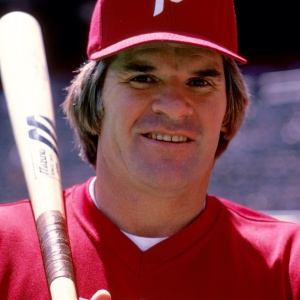 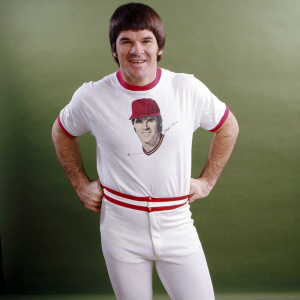 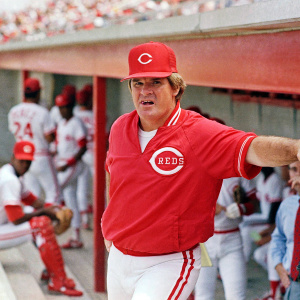
__________________
"I was going down on a chick who was 7 months pregnant when unexpectedly her unborn baby's tiny hand reached out and grabbed my face!" 
|
|
#1095
|
||||
|
||||
|
John Amos, patriarch on ‘Good Times’ and an Emmy nominee for the blockbuster ‘Roots,’ dies at 84
By BETH HARRIS Updated 3:57 PM PDT, October 1, 2024 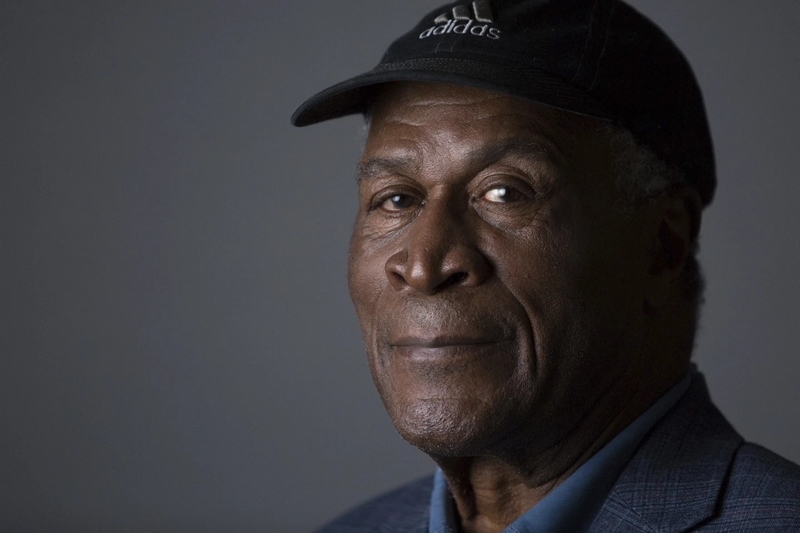 Amy Sussman/Invision/AP LOS ANGELES (AP) — John Amos, who starred as the family patriarch on the hit 1970s sitcom “Good Times” and earned an Emmy nomination for his role in the seminal 1977 miniseries “Roots,” has died. He was 84. He died Aug. 21 of natural causes in Los Angeles. Amos’ publicist, Belinda Foster, confirmed the news of his death Tuesday. He played James Evans Sr. on “Good Times,” which featured one of television’s first Black two-parent families. Produced by Norman Lear and co-created by actor Mike Evans, who co-starred on “All in the Family” and “The Jeffersons,” it ran from 1974-79 on CBS. “That show was the closest depiction in reality to life as an African American family living in those circumstances as it could be,” Amos told Time magazine in 2021. Among Amos’ film credits were “Let’s Do It Again” with Bill Cosby and Sidney Poitier, “Coming to America” with Eddie Murphy and its 2021 sequel, “Die Hard 2,” “Madea’s Witness Protection” and “Uncut Gems” with Adam Sandler. He was in Ice Cube and Dr. Dre’s 1994 video “Natural Born Killaz.” Amos’ “Good Times” character, along with wife Florida, played by Esther Rolle, originated on another Lear show, “Maude.” James Evans often worked two manual labor jobs to support his family that included three children, with Jimmie Walker becoming a breakout star as oldest son J.J. Such was the show’s impact that Alicia Keys, Rick Ross, the Wu-Tang Clan are among the musicians who name-checked Amos or his character in their lyrics. “Many fans consider him their TV father,” his son Kelly Christopher Amos said in a statement. “He lived a good life. His legacy will live on in his outstanding works in television and film as an actor. My father loved working as an actor throughout his entire life. He was my dad, my best friend, and my hero.” The elder Amos and Rolle were eager to portray a positive image of a Black family, struggling against the odds in a public housing project in Chicago. But they grew frustrated at seeing Walker’s character being made foolish and his role expanded. “The fact is that Esther’s criticism, and also that of John and others — some of it very pointed and personal — seriously damaged my appeal in the Black community,” Walker wrote in his 2012 memoir “Dyn-O-Mite! Good Times, Bad Times, Our Times.” After three seasons of critical acclaim and high ratings, Amos was fired. He had become critical of the show’s white writing staff creating storylines that he felt were inauthentic to the Black characters. “There were several examples where I said, ‘No, you don’t do these things. It’s anathema to Black society. I’ll be the expert on that, if you don’t mind,’” he told Time magazine. “And it got confrontational and heated enough that ultimately my being killed off the show was the best solution for everybody concerned, myself included.” Amos’ character was killed in a car accident. Walker lamented the situation. “If the decision had been up to me, I would have preferred that John stay and the show remain more of an ensemble,” he wrote in his memoir. “Nobody wanted me up front all the time, including me.” Amos and Lear later reconciled and they shared a hug at a “Good Times” live TV reunion special in 2019. Amos quickly bounced back, landing the role of an adult Kunta Kinte, the centerpiece of “Roots,” based on Alex Haley’s novel set during and after the era of slavery in the U.S. The miniseries was a critical and ratings blockbuster, and Amos earned one of its 37 Emmy nominations. “I knew that it was a life-changing role for me, as an actor and just from a humanistic standpoint,” he told Time magazine. “It was the culmination of all of the misconceptions and stereotypical roles that I had lived and seen being offered to me. It was like a reward for having suffered those indignities.” Born John Allen Amos Jr. on Dec. 27, 1939, in Newark, New Jersey, he was the son of an auto mechanic. He graduated from Colorado State University with a sociology degree and played on the school’s football team. Before pursuing acting, he moved to New York and was a social worker at the Vera Institute of Justice, working with defendants at the Brooklyn House of Detention. He had a brief professional football career, playing in various minor leagues. He signed a free-agent contract in 1967 with the Kansas City Chiefs, but coach Hank Stram encouraged Amos to pursue his interest in writing instead. He had jobs as an advertising and comedy writer before moving in front of the camera. Amos’ first major TV role was as Gordy Howard, the weatherman on “The Mary Tyler Moore Show,” from 1970-73. As the show’s only Black character, he played straight man to bombastic anchor Ted Baxter. He was a frequent guest star on “The West Wing,” and his other TV appearances included “Hunter,” “The District,” “Men in Trees,” “All About the Andersons,” “Two and a Half Men,” and “The Ranch.” In 2020, Amos was inducted into the New Jersey Hall of Fame. He served in the New Jersey National Guard. He is survived by daughter Shannon, a former entertainment executive, and Kelly Christopher, a Grammy-nominated video music director and editor. They were from his first marriage to Noel Mickelson, whom he met in college. His second marriage to actor Lillian Lehman also ended in divorce. Associated Press Writer Kaitlyn Huamani contributed to this report. Code:
Content, Pictures and Download links visible to registered users only. REGISTER NOW to access all areas that are invisible to non-members. 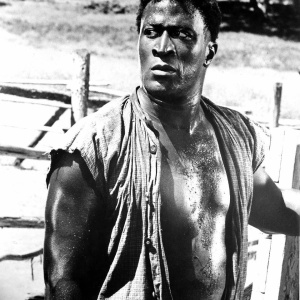 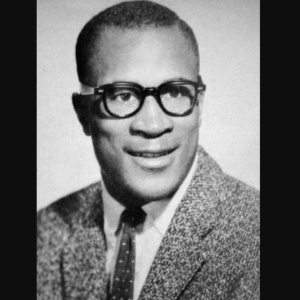 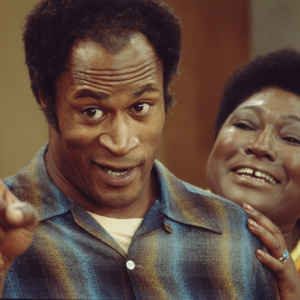 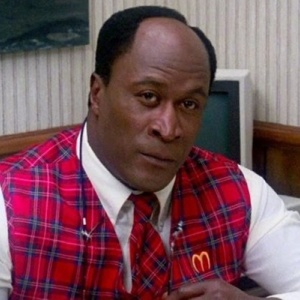 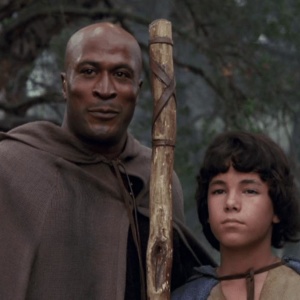 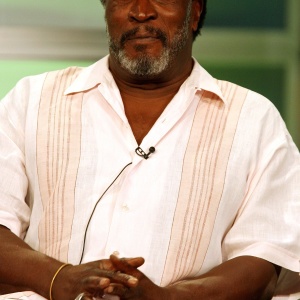 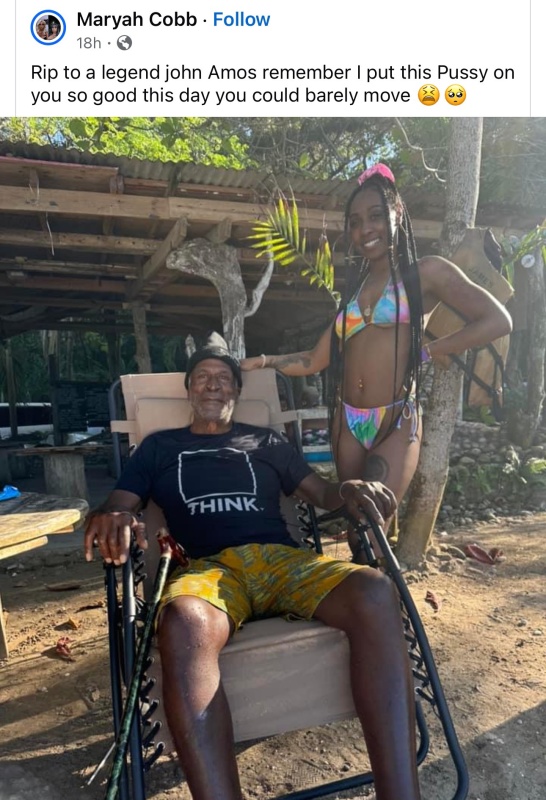
__________________
"I was going down on a chick who was 7 months pregnant when unexpectedly her unborn baby's tiny hand reached out and grabbed my face!" 
Last edited by Frothy Afterbirth : 10-02-2024 at 02:56 PM. |
|
#1096
|
||||
|
||||
|
Nobuyo Oyama, voice of beloved ‘Doraemon,’ dies aged 90
By Jessie Yeung and Yumi Asada, CNN Updated 4:26 AM EDT, Fri October 11, 2024 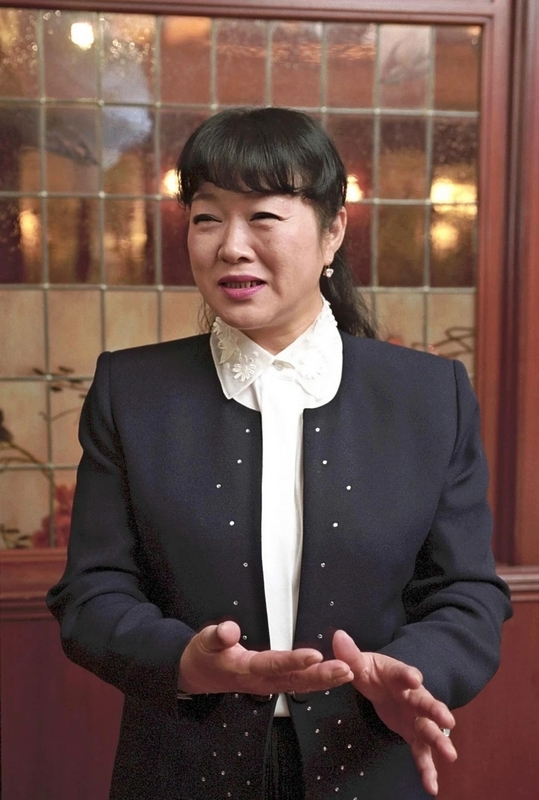 Hidetoshi Tanaka/The Yomiuri Shimbun/AP Nobuyo Oyama, the voice of beloved Japanese anime “Doraemon” for a generation of children across Asia, has died at age 90, her agency confirmed on Friday. Oyama died on September 29 due to old age, according to the Actors 7 agency. It apologized for the delay in its statement, adding: “We would like to express our sincere gratitude for the kindness you extended to the deceased during her lifetime.” A private funeral attended by relatives was held for Oyama, the agency said. Oyama was best known for voicing the eponymous character in the “Doraemon” television show, which aired from 1979 through 2005 – just one of three shows in the larger Doraemon franchise, which became globally popular, especially in regional markets like Hong Kong and Vietnam. The franchise includes dozens of animated films, video games, music albums and manga series. They follow the adventures of Doraemon, a robotic cat from the 22nd century who arrives in the present day to help a young boy called Nobita “who’s terrible at everything,” according to the franchise’s official website. The friendly-looking blue-and-white character often rescues Nobita by pulling secret gadgets from the future out of the pocket in his stomach. Oyama was born in Tokyo, according to Japan’s public broadcaster NHK. Before voicing Doraemon, she also played a role in NHK’s puppet show “Boo Foo Woo,” which ran from 1960 to 1967, the broadcaster said. But it was the animated show that launched her to worldwide fame – so much so that the 1979 show is also known as the “Oyama edition” to distinguish it from other Doraemon adaptations. The news of Oyama’s death spurred a wave of tributes on social media, with fans from across the world expressing condolences and remembering her as an iconic voice of their childhoods. “Ms. Nobuyo Ōyama… She was someone who supported me from the very beginning of my career. Thank you so much for all your hard work over the years. I truly appreciate it,” tweeted Kazuhiko Inoue, who voiced fan favorite character Kakashi in the global manga hit “Naruto,” and had parts in other popular series including “JoJo’s Bizarre Adventure” and “Demon Slayer.” “When I think of Doraemon, Nobuyo Oyama’s voice plays in my mind,” one user wrote on social platform X. Another wrote: “Doraemon, I’ve loved you ever since I can remember, thanks to Nobuyo Oyama.” Others expressed grief that Oyama had died so shortly after the death in July of Noriko Ohara, the voice of Nobita. Code:
Content, Pictures and Download links visible to registered users only. REGISTER NOW to access all areas that are invisible to non-members. 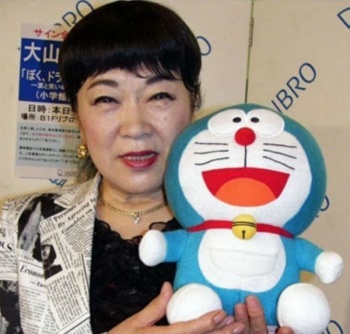 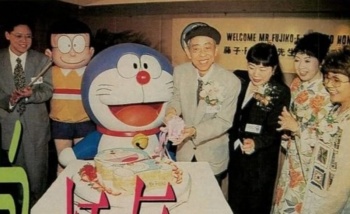 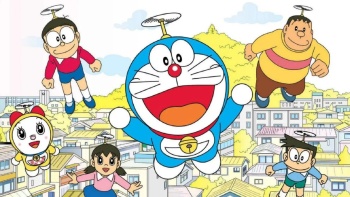  CFOTO/Future Publishing/Getty Images
__________________
"I was going down on a chick who was 7 months pregnant when unexpectedly her unborn baby's tiny hand reached out and grabbed my face!" 
|
|
#1097
|
||||
|
||||
|
Liam Payne, former One Direction member, dies at 31 after balcony fall in Argentina
KiMi Robinson USA TODAY Published 6:00 p.m. ET Oct. 16, 2024 Updated 9:37 a.n. ET Oct. 18, 2024  Former One Direction singer Liam Payne, one-fifth of the British boy band, died outside a hotel in the Argentine capital Buenos Aires, local police confirmed Wednesday. He was 31. The English musician was found dead after falling from his third-floor balcony of the Casa Sur hotel. In a statement, the capital police added they were called to the hotel in the capital's Palermo neighborhood where they were notified of an "aggressive man who could be under the effects of drugs and alcohol." Buenos Aires police said Payne's fall resulted in "extremely serious injuries," and he was confirmed to be dead at the scene, reports The Associated Press. Alberto Crescenti, head of Buenos Aires' public emergency medical services, confirmed Payne's death in a statement to local media, per Todo Noticias and La Nacion. USA TODAY has reached out to representatives for Payne and Casa Sur hotel, as well as the city of Buenos Aires, for comment.  Neil Hall, Reuters Earlier Wednesday, Payne appeared to post on Snapchat about his trip in Argentina, talking about riding horses, playing polo, and looking forward to returning home to see his dog. "It's a lovely day here in Argentina," he said in the video. Liam Payne's rise to fame with One Direction Payne earned global fame as part of the since-disbanded pop group One Direction, alongside Harry Styles, Zayn Malik, Niall Horan and Louis Tomlinson. Payne auditioned twice for the U.K. reality program "The X-Factor" before being launched into superstardom. He advanced after auditioning in 2008 and 2010 and was cut both times. However, in 2010, he was saved from elimination when Simon Cowell, Nicole Scherzinger and Louis Walsh folded him into a band with fellow teen solo artists Styles, Horan, Tomlinson and Malik. After their first single "What Makes You Beautiful" became a worldwide hit, the group – who placed third on "X Factor" – released their debut album "Up All Night." As they released four more records, they sold out arenas and stadiums around the world during the four headlining tours and scored Top 10 hits including "Story of My Life," which Payne co-wrote, "Best Song Ever" and "Drag Me Down." The band took an indefinite hiatus in 2016 following the release of their fifth album, "Made in the A.M." All members, including Malik, who left the group in March 2015, went on to pursue solo careers. "It is definitely really sad for us. But obviously, we're going back into it. So it's not goodbye; it's just, 'See you later,'" Payne told USA TODAY in 2015 about their hiatus. "It's like what Tigger used to say: 'Ta-ta for now.'"  Carlo Allegri, Reuters Liam Payne death: One Direction star's career as a solo artist was about 'finding myself' Payne, whose music was inspired by R&B, electronic and dance music, released several hit singles following the hiatus and dropped his first solo album, "LP1," in December 2019. His 2017 track with Quavo, "Strip That Down," entered the Top 10 on the Billboard Hot 100. His other hits included the Rita Ora duet "For You," which appeared on the "Fifty Shades Freed" soundtrack, and the Zedd collaboration "Get Low." Ahead of the release of his long-awaited debut solo album, Payne told USA TODAY at the time that it felt "really great" to finally put it out into the world. "It took a long time to finish off – not because it was hard to make, but we were having so much luck with the singles that we didn't need to focus on making the album at that moment in time," Payne said. "I was just kind of finding myself and finding my sound. And also in the band, we made albums really quickly: like two weeks' worth of writing and then a month of recording. So I wanted to enjoy this experience a bit more." His latest release, a single titled "Teardrops," revealed lyrics about feeling "broken" amid a heartbreak. In August, Payne was announced as one of the judges of an upcoming music competition show called "Making the Band" on Netflix. Filming was expected to take place over the summer with Scherzinger, Kelly Rowland and AJ McLean. Earlier this month, fans at Horan's tour stop in Buenos Aires shared videos of Payne dancing inside a box suite at Movistar Arena. 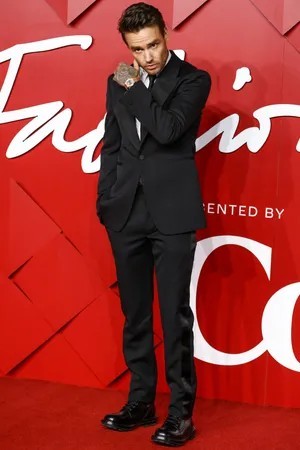 Henry Nicholls, Reuters Liam Payne was open about his struggles, addiction: 'I had to kind of go away' In recent years, Payne spoke candidly about struggling with addiction and the mental health struggles he experienced during the peak of 1D's fame. "It was just a case of growing up, really," Payne told USA TODAY about the turning point that led to his sobriety journey. "Luckily for me at those times, I had the best people around me to make me realize different points in my life where I could be better. And obviously, having kids completely changes the mindset around everything you do. I'm still quite young – I'd like to think so at least – so I still have a lot of learning left to go. I'm still very much finding myself as a person." 911 call made before Liam Payne's death says he was 'breaking the whole room' before fall He shared that therapy helped him find a healthy relationship with alcohol. "I was helped to get sober by a (therapist) named Chip Somers, who also got Russell Brand through sobriety. I actually went to a meeting with Russell, where you recount stories and talk about different situations," Payne told USA TODAY. "It's nice finding people who are going through the same (expletive) as you are." Payne opened up about difficulties with 1D's fame In a July 2023 video marking his return to YouTube, the singer shared that he'd realized he "became somebody who I didn't really recognize anymore." "I had to kind of go away to kind of get better, let's say," he shared. "The whole thing got to that point of where it was just to kind of scramble to stay relevant." Payne added, "That was the most important bit, was going back to the root of it to find out why it is I like doing this, why I like making music for you guys. Who am I? What do I actually want to say to you? You know, it's a really privileged position that I'm in right now. And I actually want to make use of it." He revealed that he'd gone to a "wonderful place" in Louisiana for nearly 100 days to "kind of go and get my head straight." Payne also shared at the time that he hadn't consumed alcohol in nearly six months. Payne described himself as being "a little bit scared" to tour again because "I haven't road tested (performing) in this new frame of mind and not having anything to lean on does sound quite daunting." In August 2023, he was forced to cancel six shows in Mexico and South America after being hospitalized for a kidney infection. In the video, Payne also apologized for "cringe" comments he made on a podcast in 2022 that disparaged his former bandmates, calling his statements "a scramble to stay relevant." "The rest of the boys really stuck by me when I needed them most; they kinda came to the rescue. Even Zayn as well," he added. In a 2021 interview with "The Diary of a CEO" podcast, Payne opened up about the fact that he "didn't like myself very much" during his early boy band days, which he said were filled with "pills and booze" and "moments of suicidal ideation." "The day the band ended, I was like, 'Thank the Lord,'" he said. "I know a lot of people are going to be mad at me for saying that, but I needed to stop or it would kill me." "In the band... the best way to secure us because of how big we’d got, was just to lock us in our rooms. What’s in the room? A mini-bar," he said on the podcast. "So at a certain point, I thought, I’m just going to have a party-for-one and that seemed to carry on for many years of my life. "There were points where it was toxic and difficult. Don't get me wrong; we had the best time ever, but… you don't realize you have a choice at that point." Fans gather to mourn One Direction star Reuters reporters at the scene in Argentina saw crowds gathering outside the hotel, where dozens of police and emergency services teams had cordoned off an area as night fell on the city. One 25-year-old fan, Yamila Zacarias, said her family had made a lot of effort so she could see One Direction when they came to Argentina, but she had decided not to go as her parents didn't have much money then. "He meant a lot to me because the band came into my life at this time when you're trying to be a part of something, and being a One Direction fan became that something for me," she said. "This was the only time I could applaud him." Violeta Antier, another fan, told Reuters she had come straight away after her sister told her Payne had died. "I saw him two weeks ago at a Niall (Horan) concert, another One Direction member. He was there, I saw him," she said. "He was OK." Payne had attended Horan's Oct. 2 Buenos Aires concert on the Latin American tour leg that spanned Mexico, Brazil, Chile, Peru and Colombia. The two had posted videos together and with fans. This story was updated to add new information. If you or someone you know is struggling with substance use disorders, you can call the Substance Abuse and Mental Health Services Administration National Helpline at 1-800-662-HELP (4357). The service is free, confidential and available in English and Spanish. Contributing: Fernando Cervantes, Cydney Henderson and Patrick Ryan, USA TODAY; Reuters Code:
Content, Pictures and Download links visible to registered users only. REGISTER NOW to access all areas that are invisible to non-members.  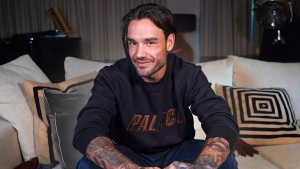 
__________________
"I was going down on a chick who was 7 months pregnant when unexpectedly her unborn baby's tiny hand reached out and grabbed my face!" 
|
|
#1098
|
||||
|
||||
|
Original Iron Maiden singer Paul Di'Anno dies
2 days ago Mark Savage Music Correspondent 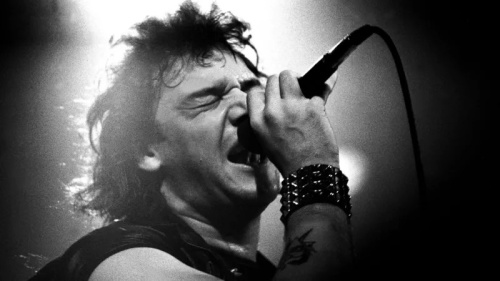 Paul Di'Anno, the original singer for heavy metal band Iron Maiden, has died at the age of 66. Born Paul Andrews, the musician featured on the band's first two albums, Iron Maiden and Killers, establishing them as a crucial part of the new wave of British heavy metal. He left the band in 1981 and was replaced by Bruce Dickinson. Di'Anno later admitted he had been partying "non-stop, 24 hours a day" and that the impact of his lifestyle "wasn’t fair to the band, the fans or to myself". The band's current members paid tribute, saying they were "all deeply saddened" by his death. In a statement on social media, bass player Steve Harris said it was "just so sad he's gone". "At least he was still gigging until recently, it was something that kept him going, to be out there whenever he could. He will be missed by us all. Rest in peace mate." The rest of the band's statement said: "Paul's contribution to Iron Maiden was immense and helped set us on the path we have been travelling as a band for almost five decades. "His pioneering presence as a frontman and vocalist, both on stage and on our first two albums, will be very fondly remembered not just by us, but by fans around the world." Di'Anno's death was announced by record label Conquest Music, on behalf of his family. In a statement, they said Di'Anno had "passed away at his home in Salisbury". No cause of death was given. "Conquest Music are proud to have had Paul Di'Anno in our artist family and ask his legion of fans to raise a glass in his memory," they added. 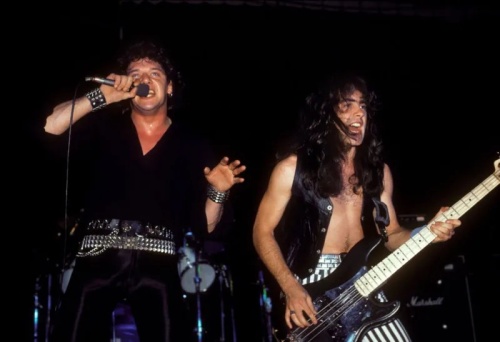 Born in Chingford, east London, in 1958, Di'Anno sang with numerous bands as a teenager, while working as a butcher and a chef. In 1977, he befriended Harris, who was seeking a singer for his up-and-coming metal band Iron Maiden. Di'Anno auditioned and got the job. Their sound was an anomaly during the ascendancy of punk rock, and they struggled to get gigs outside London. To address the issue, they decided to make a demo tape to drum up business. Known as the Soundhouse Tapes, the three-track demo gained them a cult following, selling 5,000 copies by mail order. By 1979, they had secured a record deal with EMI and started recording their self-titled debut. Although it was put together in a hurry, the record was hugely influential - with its combination of punk intensity and rock riffs setting the template for heavy metal in the 1980s. It entered the UK album chart at number four in April 1980, and the success of the single Running Free earned the band a coveted spot of music TV show Top of the Pops. The follow-up album, 1981's Killers, had a harder sound again. But after a world tour, Di'Anno was either kicked out of the band or left of his own accord. Either way, he said success had led him to a dark place. "I was already a fairly excessive character, but there I really went for it," he told Rock Hard magazine in 2004. "I was on another planet, as well as the rest of the band." With Dickinson taking over, Iron Maiden went on to become one of rock's most successful groups, with genre-defining hits like Run To The Hills and Can I Play With Madness. But Di'Anno never held a grudge against the band, or his replacement. "Everyone thinks that we hated each other, which is [completely wrong]," he told SDTV in an interview last month. "That's the press for you." He also denied rumours that he had been underpaid for his contribution to the first two Iron Maiden albums, which included co-writing credits on key tracks like Remember Tomorrow, Killers, Sanctuary and Running Free. "To be honest with you, it's nobody's damn business [but] I got paid very well," he told Rock Hard in 2022. "They looked after me. End of story." 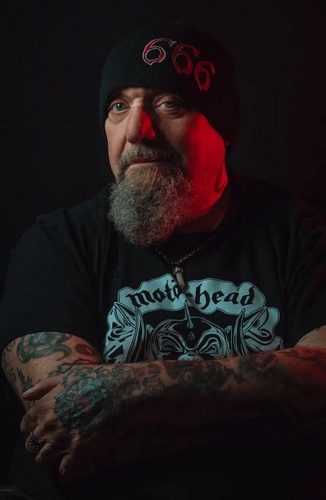 After leaving Iron Maiden, Di’Anno's raw, aggressive vocals were cited as an influence by metal bands including Metallica, Pantera and Sepultura. He stayed in music, both a solo artist and as a member of bands like Gogmagog, Battlezone, Praying Mantis, and Killers. In recent years, he had been performing in a wheelchair due to serious health issues including lymphedema, a condition that causes swelling of your body tissue. In 2022, fans helped him raise money to have major knee surgery in Croatia. Despite that, he kept up a robust touring schedule, playing more than 100 shows in 2023 and 2024. A career retrospective album, The Book of the Beast, was released last month, including highlights from his solo career and two "reworked" versions of Iron Maiden songs Tomorrow and Wrathchild. A documentary about his life is scheduled for release at the end of the year. Code:
Content, Pictures and Download links visible to registered users only. REGISTER NOW to access all areas that are invisible to non-members.
__________________
"I was going down on a chick who was 7 months pregnant when unexpectedly her unborn baby's tiny hand reached out and grabbed my face!" 
|
|
#1099
|
||||
|
||||
|
Former MLB superstar Fernando Valenzuela dead at age 63
By Homero De la Fuente, CNN Updated 1:36 AM EDT, Wed October 23, 2024 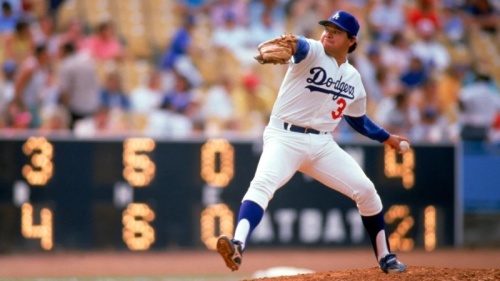 Ron Vesely/MLB Photos/Getty Images (CNN) - Fernando Valenzuela, the legendary pitcher whose incredible rise to stardom with the Los Angeles Dodgers captivated baseball fans and created the cultural phenomenon known as “Fernandomania,” died on Tuesday, according to the Dodgers. Valenzuela was 63. Prior to the Dodgers’ postseason run in 2024, the team announced Valenzuela would step away from his usual radio broadcast duties for the rest of the season “to focus on his health.” “He is one of the most influential Dodgers ever and belongs on the Mount Rushmore of franchise heroes,” president and CEO of the club Stan Kasten said in a statement. MLB commissioner Robert Manfred, Jr. called Valenzuela “one of the most impactful players of his generation.” He said the famed pitcher would be honored during the upcoming World Series. 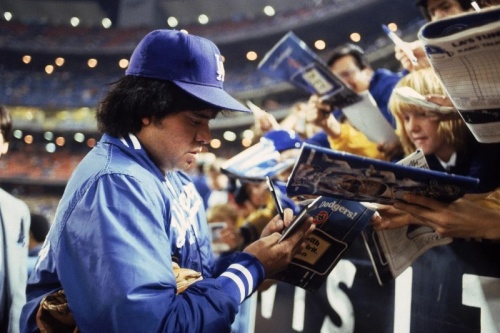 Al Seib/Los Angeles Times/Getty Images Throughout his 17-year career in MLB, Valenzuela was a six-time All-Star. He finished his career with 173 regular season wins and over 2,000 strikeouts. Valenzuela played 11 seasons with the Dodgers and had stints with the California Angels, St. Louis Cardinals, Philadelphia Phillies, Baltimore Orioles and San Diego Padres. The youngest of 12 children, Valenzuela hailed from the small Mexican town of Etchohuaquila in the state of Sonora and would grow up to become one of the most iconic figures in Major League Baseball history. Part of why he was beloved by fans was his atypical physique. He wore his thick hair long, was slightly chubby, but his iconic windup, poised demeanor, and dominant pitching performances captivated the Latino community and the world alike. With 24 hours notice, Valenzuela was thrown into the global spotlight in 1981, when Dodgers manager Tommy Lasorda named him the team’s Opening Day starting pitcher due to last-minute injuries to the club’s first two starters. It was a situation Dodgers’ executives would have never envisioned after having the luxury of turning to Cy Young Award winners like Don Newcombe, Don Drysdale and Sandy Koufax to open the season in years past. By comparison, Valenzuela had pitched only a total of 17 relief innings in the Majors, albeit scoreless innings; his resume hardly resembled that of a traditional Opening Day starter. If that wasn’t pressure enough, Valenzuela was making the start against the defending NL West champion Houston Astros, who eliminated the Dodgers in a one-game playoff tiebreak the previous season. All of that didn’t seem to matter to the 5’11, 180-pound lefty as he masterfully retired 11 of the last 12 batters he faced to finish a five-hit, complete game shutout, according to Baseball Almanac statistics. The Dodgers would win the game 2-0 in front of a sold-out crowd of 50,511 at Dodger Stadium.  Richard Mackson/Sports Illustrated/Getty Images The previously unknown rookie pitcher became a phenomenon as he followed his Opening Day performance with seven wins over his next seven starts in dominant fashion. ‘El Toro’ finished his rookie year with a 13-7 record and a 2.48 ERA in the strike-shortened season, which he capped by hurling a complete game in a Dodgers’ World Series victory against the New York Yankees in 1981. Valenzuela went on to become the only player in MLB history to win the Cy Young Award and the Rookie of the Year Award in the same season. The Mexican-born pitcher’s rise to stardom transcended past the pitching mound. He was a cultural phenomenon that gave the Latino community in the United States a role model to root for. Famed Dodgers broadcaster Vin Scully described “Fernandomania” as a “religious experience,” and for many, that’s precisely what it was. In ritualistic fashion, fans would line up in droves to watch the burly kid from Sonora take the mound, showing up to Dodger Stadium wearing their Valenzuela apparel. Mexican folk music would be played at the stadium, and the Dodgers even hired more Spanish-speaking ushers to accommodate the influx of new Hispanic fans. The number of Mexican radio stations broadcasting Dodgers games increased from three to 17, according to the Society for American Baseball Research (SABR). At the height of “Fernandomania,” the Spanish broadcasts had more than twice the listening audience of Scully, per SABR. Valenzuela followed up his rookie year, making six straight All-Star games while earning two Silver Slugger Awards and a Gold Glove. His best season on the mound came in 1986, when the screwball-throwing pitcher finished with a career-best 21 wins, including 20 complete games. In 1991, the Dodgers released Valenzuela during spring training. After leaving the Dodgers, Valenzuela would have stops with other teams in the majors, struggling to recapture his form, before retiring in 2017. 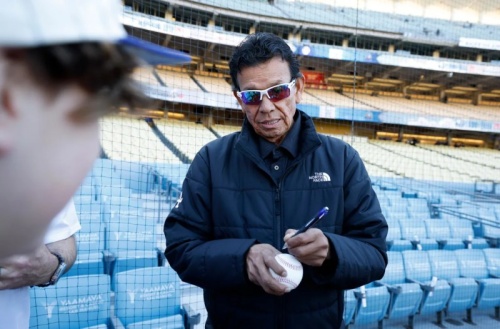 Kevork Djansezian/Getty Images Following his playing career, Valenzuela began calling games on the Dodgers Spanish-language radio broadcast in 2003 with his former interpreter, Jaime Jarrin. Valenzuela’s iconic jersey No. 34 was retired by the Dodgers in 2023, becoming the first player in franchise history to receive the honor without being inducted into the National Baseball Hall of Fame. He is survived by his wife, Linda, and their four children. An earlier version of this story incorrectly stated the day of his death. It was Tuesday. Code:
Content, Pictures and Download links visible to registered users only. REGISTER NOW to access all areas that are invisible to non-members.
__________________
"I was going down on a chick who was 7 months pregnant when unexpectedly her unborn baby's tiny hand reached out and grabbed my face!" 
|
|
#1100
|
||||
|
||||
|
Teri Garr, Star of ‘Young Frankenstein’ and ‘Tootsie,’ Dies at 79
By Pat Saperstein Variety Oct 29, 2024 10:16am PT  Getty Teri Garr, the comic actress and singer who brought her buoyant personality to “Young Frankenstein” and was Oscar-nominated for “Tootsie,” died on Tuesday in Los Angeles after a long battle with multiple sclerosis. She was 79. An influential performer to comedians including Tina Fey, Garr was a familiar face in dozens of TV shows and films of the 1970s, ’80s and ’90s. The actress revealed in 2002 that she had been diagnosed with MS, and she suffered an aneurysm in 2006. After starting her career as a dancer, Garr first gained attention as Inga, the saucy assistant in Mel Brooks’ 1974 “Young Frankenstein,” who greeted Gene Wilder’s Dr. Frederick Frankenstein with the memorable “Vould you like to have a roll in ze hay?” On “Friends,” she played Phoebe Abbot in three episodes in 1997 and 1998. In Steven Spielberg’s “Close Encounters of the Third Kind,” Garr was the wife of Richard Dreyfuss’ character. She netted a supporting actress Oscar nomination starring opposite Dustin Hoffman as his actress friend in Sydney Pollack’s “Tootsie,” and played the working mom to Michael Keaton’s stay-at-home dad in “Mr. Mom.” Born in Ohio, she moved to Los Angeles, graduated North Hollywood High School, and attended Cal State Northridge before moving to New York to study acting. Starting out as a go-go dancer, she can be seen shimmying behind the performers in filmed rock concert “The T.A.M.I. Show” and in six Elvis Presley features, most choreographed by her mentor David Winters. During the 1960s, she had bit parts on sitcoms including “That Girl,” “Batman” and “The Andy Griffith Show.” Garr’s first speaking role came in the Monkees’ offbeat feature film “Head,” written by Jack Nicholson, whom she had met in an acting class. On the “Assignment Earth” episode of “Star Trek,” she played a ditsy secretary, the first in a string of many such roles. She became a regular singer and dancer on “The Sonny and Cher Show” before landing a role in Francis Ford Coppola’s “The Conversation.” Coppola cast her again in “One From the Heart.” Among her other roles were the wife of John Denver’s character in “Oh, God,” the mother of the boy protagonist in “The Black Stallion” and roles in “Dumb and Dumber” and “Mom and Dad Save the World.” Garr worked with many of the era’s most notable directors: In addition to Brooks, Spielberg, Pollack and Coppola, she worked with Martin Scorsese for “After Hours,” and Robert Altman in “The Player” and “Pret-a-Porter.” Her many TV roles included turns on “M*A*S*H,” “The Odd Couple” and “The Bob Newhart Show.” Garr explained to the A.V. Club in a viciously frank and feminist 2008 interview why she was often cast as the “long-suffering wife” in films such as “Mr. Mom”: “If there’s ever a woman who’s smart, funny, or witty, people are afraid of that, so they don’t write that. They only write parts for women where they let everything be steamrolled over them, where they let people wipe their feet all over them. Those are the kind of parts I play, and the kind of parts that there are for me in this world. In this life.” Despite her obvious appeal to great directors, she found many of her encounters in the business to be unbearably sexist, such as being told by “The Sonny and Cher Show” producers that if she wanted to be paid as much as the men, she could quit. “The whole world is sexist, starting with that show. That was an example of it: not getting paid what everybody else got paid for doing the same thing. So I started learning early that women are steamrolled,” she told the A.V. Club. She hosted “Saturday Night Live” three times and appeared frequently on “The Tonight Show Starring Johnny Carson” and “Late Night With David Letterman.” Her career slowed in the late 1990s, though she continued to take on small roles in films including “Dick” and “Unaccompanied Minors,” and as the voice of Mary McGinnis in two Batman animated films, “Batman Beyond: The Movie” and “Batman Beyond: Return of the Joker.” She published an autobiography, “Speedbumps: Flooring It Through Hollywood,” in 2006. She is survived by her daughter, Molly O’Neil, and grandson Tyryn. Code:
Content, Pictures and Download links visible to registered users only. REGISTER NOW to access all areas that are invisible to non-members. 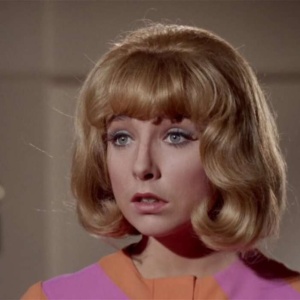   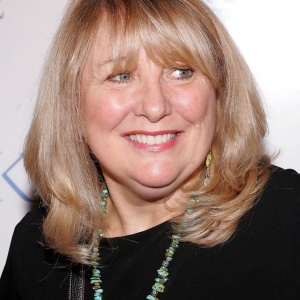
__________________
"I was going down on a chick who was 7 months pregnant when unexpectedly her unborn baby's tiny hand reached out and grabbed my face!" 
|
 |
«
Previous Thread
|
Next Thread
»
| Thread Tools | |
| Display Modes | |
|
|
All times are GMT -5. The time now is 09:39 AM.











 Linear Mode
Linear Mode

